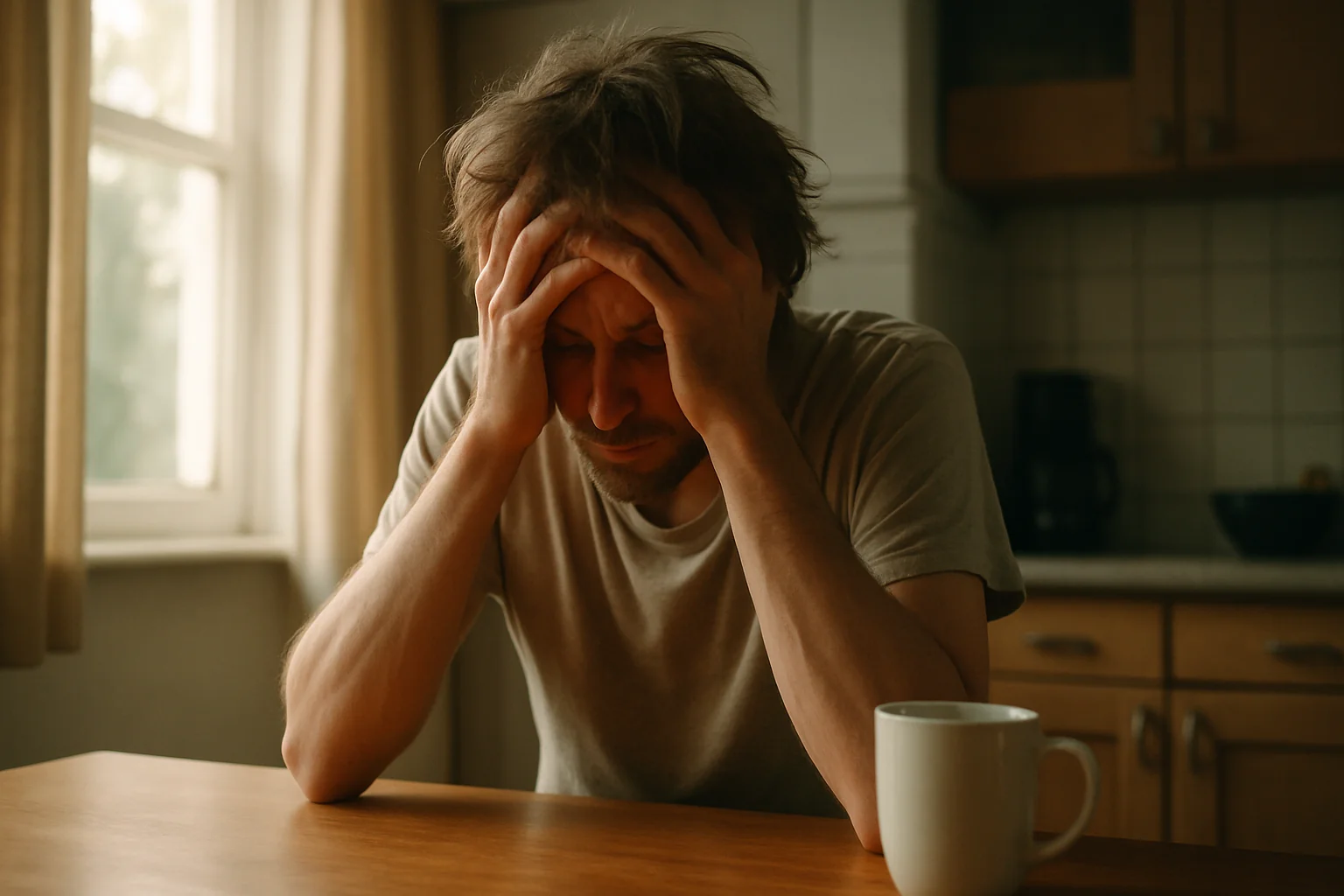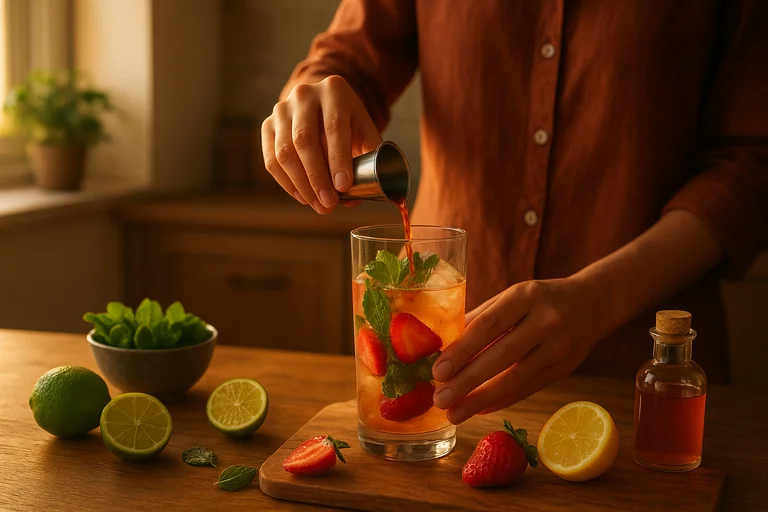A 2 minute assessment to get a personalized mental health or alcohol recovery plan.
iver disease from alcohol can cause rapid kidney failure through hepatorenal syndrome, making blood pressure control and cutting back essential steps to protect long-term kidney health.
What You'll Discover:
- How alcohol challenges your kidneys through diuresis, blood pressure elevation, and toxic hits
- Why heavy drinking doubles chronic kidney disease risk and how binges raise acute injury danger
- The dose-response link between alcohol and hypertension—the main highway to CKD
- Special kidney hazards: beer potomania, rhabdomyolysis, and hepatorenal syndrome
- A practical kidney-first plan if you drink: pressure tracking, hydration with solute, timing rules
- When naltrexone oral tablets can reduce heavy-drinking days and craving to protect kidneys
- Urgent-care red flags: dark urine, muscle pain, confusion, or sudden kidney decline
Kidney basics - what's at stake when alcohol enters the picture
Your kidneys filter about 150–180 liters of blood-borne fluid daily, reclaiming what you need—water, electrolytes, glucose, amino acids—and excreting wastes and extra fluid. They also regulate blood pressure, acid–base balance, and hormones involved in red blood cell production and bone health.
All that said, alcohol challenges this system along several intertwined pathways:
Diuresis and dehydration - Alcohol inhibits vasopressin (antidiuretic hormone; ADH), so the kidneys excrete more water than they should, leading to increased urine output and dehydration—even at modest doses. Dehydration concentrates the blood, stresses filtration, and predisposes to electrolyte disturbances.
Blood pressure elevation - Dose-response meta-analyses show a graded increase in hypertension with each 10 g/day uptick in alcohol; this is independent of beverage type. Hypertension damages glomeruli over years and is a major CKD driver.
Metabolic and inflammatory stress - Heavy or prolonged use adds systemic inflammation, worsens sleep (which itself influences BP and metabolic control), and can magnify the impact of other risk factors like diabetes.
Toxic hits to tubules - In certain contexts—heat, exertion, long immobility—alcohol is linked to rhabdomyolysis (breakdown of skeletal muscle). Myoglobin released from muscle can clog kidney tubules, causing acute kidney injury (AKI).
Liver–kidney axis - Alcohol-related cirrhosis can precipitate hepatorenal syndrome AKI—a functional kidney failure driven by circulatory changes in advanced liver disease, often with high short-term mortality unless treated promptly.
CKD 101 - how clinicians define and stage kidney disease
The KDIGO 2024 guideline defines CKD as abnormal kidney structure or function for three months or longer with health implications. Staging uses the CGA system: Cause, GFR category (G1–G5), and Albuminuria category (A1–A3). Persistent albuminuria (A2/A3) is an early warning even when eGFR looks "normal." This framework guides monitoring, BP targets, and risk reduction—including decisions about alcohol.
What the evidence says about alcohol and kidneys
Heavy use - consistently harmful
The National Kidney Foundation reports that heavy drinking doubles CKD risk and strains kidney function; kidney insults compound when heavy use is regular or binge-patterned. Heavy drinking co-travels with hypertension, amplifying glomerular damage and accelerating CKD progression. Dose-response analyses link higher alcohol to higher BP across sex and region.
Binges and AKI - the under-recognized danger
Binge drinking (rapid intake to high BAC) creates ADH suppression plus dehydration, often combined with poor oral intake and nighttime immobility. These ingredients increase risk for AKI from pre-renal causes (volume depletion) and rhabdomyolysis (myoglobin-induced tubular injury). Published case series show dialysis may be needed in severe episodes.
Light–moderate use - why results look mixed
Several cohorts report U-shaped relationships—lower measured CKD or proteinuria incidence in light/moderate drinkers vs. abstainers and heavy drinkers. But these findings are very vulnerable to confounding (moderate drinkers tending to have healthier diets, activity, and healthcare access) and misclassification of abstainers (those abstaining due to illness). Critically, even low levels raise BP modestly, which is kidney-relevant long-term.
Bottom line: Whether or not a small glass occasionally shows "neutral" signals in some cohorts, the kidney-protective move for most people is less alcohol, fewer binges, earlier cut-offs, and kept-in-range blood pressure.
Special kidney hazards linked to alcohol
1) Beer potomania (dangerous low sodium)
Large volumes of low-solute beer paired with a low-protein/low-salt diet can produce severe hyponatremia ("beer potomania"). Symptoms range from fatigue and gait disturbance to seizures and coma. Correction must be careful to avoid neurologic complications; prevention is straightforward: adequate dietary solute and avoidance of binges. Recent systematic reviews emphasize recognizing the pattern early.
2) Heat, exertion, and "one bad night"
Hot environments or strenuous events plus alcohol are a perfect storm for rhabdomyolysis and AKI: dehydration, muscle breakdown (from exertion or long immobility), and sometimes trauma. Dark ("tea/cola") urine, severe muscle pain/weakness, or confusion after heavy drinking warrant urgent evaluation; early IV fluids can be kidney-saving.
3) Liver disease → hepatorenal syndrome
In advanced alcohol-related cirrhosis with ascites, altered vascular tone reduces kidney perfusion and leads to HRS-AKI. Although the kidney tissue may be structurally normal initially, filtration plummets. HRS is life-threatening and highlights how alcohol harms kidneys through the liver.
Blood pressure - the main highway from alcohol to CKD
If you remember one physiologic link, let it be blood pressure. Across multiple analyses, alcohol intake and hypertension show a dose-dependent, near-linear relationship (each 10 g/day—about one drink—steps risk up). Reducing alcohol helps reduce systolic and diastolic BP, particularly when combined with sleep repair, sodium moderation, and activity. For people with CKD, KDIGO emphasizes intensive BP control (when tolerated) because BP reduction slows CKD progression and lowers cardiovascular risk.
Practical translation: Even if your eGFR is normal, if alcohol elevates your BP—especially in after-work or weekend windows—you're likely nudging kidney risk upward. Tracking home BP across alcohol-free and alcohol-included weeks often reveals a pattern easy to miss in clinic snapshots.
How alcohol disrupts fluids and electrolytes (and why that matters)
ADH suppression → diuresis - Alcohol directly inhibits vasopressin release, increasing urine output independent of plasma osmolality. That's why frequent bathroom trips accompany even moderate doses. The net result: dehydration and concentrated blood, which make your kidneys' job harder.
Electrolyte swings - With heavy/episodic use, sodium may fall (beer potomania) and potassium/magnesium/phosphate can shift—compounded by vomiting, poor diet, or diarrhea. Those shifts destabilize heart rhythm and muscle function and can worsen kidney perfusion indirectly.
If you already have CKD - what alcohol means for you
With CKD (especially A2/A3 albuminuria or G3+ eGFR stages), every risk factor matters more. Alcohol adds BP elevation, sleep fragmentation (which worsens BP/metabolic control), and dehydration. Many clinical teams advise abstinence or very sparing use, no binges, and tighter monitoring of blood pressure, electrolytes, and volume status if you choose to drink at all. Use the CGA staging framework with your clinician to individualize targets.
A practical kidney-first plan if you drink at all
1) Focus on pressure and pattern
Know your numbers - Use a validated home BP monitor and log readings morning/evening for two weeks. Compare alcohol-free vs. social weeks—you'll often see a clear difference.
Stop the spikes - Avoid binges. If you drink, pace at one drink per hour maximum, cap 1–2 drinks, and finish at least 3–4 hours before bed to reduce sleep-related BP surges and nocturnal diuresis.
2) Hydrate and add solute
Pair each drink with a full glass of water; aim for light-yellow urine by day's end. Don't rely on beer for "hydration." Eat normal-solute meals (adequate protein and electrolytes) when drinking to avoid beer potomania risk.
3) Separate alcohol from heat/exertion
Don't combine heavy drinking with endurance events, sauna/hot-tub sessions, or outdoor heat. If you do move from a workout to socializing, replete fluids and electrolytes first and keep alcohol light and early to reduce AKI/rhabdo risk.
4) Meds and labs check-in
Review your medications (diuretics, ACE inhibitors/ARBs, diabetes meds) with your clinician; alcohol can potentiate hypotension/dehydration or mask hypoglycemia. Ask which labs matter for you and how often to check: serum creatinine/eGFR, urine ACR, electrolytes, and, when relevant, liver enzymes if you're working on alcohol goals. KDIGO's CGA framework helps prioritize.
5) Sleep to protect kidneys
Alcohol fragments sleep and raises next-day BP. Move any intake earlier, keep it light, and prioritize consistent wake times. Your kidneys "feel" the benefit through better pressure, hydration cues, and activity the next day.
If cutting back isn't sticking - evidence-based help
Behavioral change—not willpower alone—drives kidney protection (fewer heavy days, ending binges, earlier cut-offs, better sleep). If those steps keep slipping, talk with your clinician about a structured plan that can include:
Motivational interviewing and CBT - Map triggers (client dinners, travel, post-conflict windows), set limits, and build refusal scripts.
Medication option (when appropriate): naltrexone oral tablets - For many adults with recurrent heavy episodes or Alcohol Use Disorder (AUD), naltrexone oral tablets reduce heavy-drinking days and craving, especially alongside counseling. Clinicians screen for contraindications (notably current opioid use/dependence and acute hepatitis/liver failure) and often check baseline liver tests. By cutting heavy days, you help control BP, reduce dehydration, and lower AKI risk—wins that matter for kidneys.
Safety note: If you've been drinking heavily, don't stop abruptly without medical guidance; alcohol withdrawal can be dangerous and sometimes requires medically supervised care as a bridge to longer-term change.
With that in mind, for confidential support and treatment referrals in the U.S., contact SAMHSA's National Helpline: 1-800-662-HELP (4357) or visit FindTreatment.gov.
When to seek urgent care, fast
Possible AKI - Very dark/low urine, sudden swelling, shortness of breath, or new confusion after a heavy night, heat exposure, or illness.
Rhabdomyolysis red flags - Severe muscle pain/weakness, fever, or cola-colored urine—especially after immobilization or intense exertion plus alcohol. Early IV fluids are kidney-saving.
Severe hyponatremia symptoms - Confusion, seizures, severe headache after prolonged beer intake with poor diet—consistent with beer potomania; this is a medical emergency.
Cirrhosis with sudden kidney decline - If you or a loved one with ascites and advanced liver disease develops rapid kidney failure, ask about HRS-AKI; early recognition improves outcomes.
FAQs
Does alcohol actually cause CKD—or just worsen risk factors like BP?
Both. Heavy use is linked to higher CKD risk, and alcohol clearly elevates BP, a major CKD driver. Even if low levels look "neutral" in some studies, the kidney-safe direction is less alcohol, fewer spikes, and earlier timing.
Is wine safer than beer or liquor for kidneys?
From a kidney standpoint, dose and pattern dominate. All alcohol suppresses ADH (diuresis) and raises BP with increasing dose. Beer carries a unique beer potomania hazard when paired with low-solute diets; spirits can concentrate dose quickly; wine shares the BP/diuresis effects.
Can I drink if I'm stage 2–3 CKD?
Ask your clinician. Many people with CKD are advised to avoid or keep intake very low, never binge, and monitor BP, electrolytes, and volume closely if they do drink. Individual factors (albuminuria, BP control, meds) matter. KDIGO's CGA framework guides the plan.
Does alcohol cause kidney stones?
Evidence is mixed and inconsistent by beverage and population; in any case, alcohol does not prevent or treat stones, and its diuretic/dehydrating effect can worsen stone risk if it displaces water. Prioritize daily hydration and specific stone-prevention diet from your clinician.
How soon might my kidneys benefit if I cut back?
Weeks for BP and hydration rhythms to improve; months for albuminuria or eGFR trends (if impacted) to show direction. Many people notice fewer nighttime bathroom trips and steadier morning energy within days of moving drinks earlier and lower.
I'm trying to cut back, but social and work events make it hard—what's one change with big payoff?
Adopt a firm 3–4-hour cut-off before bed and a two-drink max on social nights, plus a water-with-every-drink rule. That single guardrail often reduces BP spikes, dehydration, and next-day fatigue enough to build momentum for bigger changes.
A kidney-first one-page plan you can start today
- Audit the week: count standard drinks (about 14 g alcohol each). Flag binge windows (weekend parties, client dinners).
- Set caps: 0–1 on routine nights; 1–2 max on social nights; pace at one drink per hour or less; never binge.
- Move earlier: finish at least 3–4 hours before bed to reduce nocturnal diuresis and sleep-BP surges.
- Hydrate with solute: water between drinks; eat a normal-solute meal—not just pretzels.
- Track BP: compare alcohol-free vs. social weeks; share the log with your clinician to tailor targets.
- If reduction stalls: ask about counseling and whether naltrexone oral tablets fit your goals and medical profile—these can reduce heavy-drinking days and craving when paired with therapy.
- Know your rescue: In the U.S., SAMHSA's National Helpline 1-800-662-HELP offers 24/7, confidential referrals; FindTreatment.gov can list options by location/insurance.
Ready to understand where you stand?
Not sure if your drinking pattern puts your kidneys at risk? Our quick, confidential alcohol assessment gives you personalized guidance you can share with your clinician, plus safer next steps aligned to your goals.
Start your 3-minute alcohol use assessment




